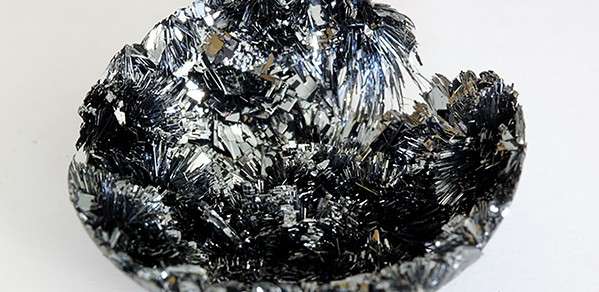Breakthrough ink discovery could transform the production of new laser and optoelectronic devices

A breakthrough 'recipe' for inkjet printing, which could enable high-volume manufacturing of next-generation laser and optoelectronic technologies, has been uncovered by Cambridge researchers.
The research, led by Dr Tawfique Hasan, of the Cambridge Graphene Centre, University of Cambridge, found that Black phosphorous (BP) ink – a unique two-dimensional material similar to graphene – is compatible with conventional inkjet printing techniques, making possible – for the first time – the scalable mass manufacture of BP-based laser and optoelectronic devices.
An interdisciplinary team of scientists from Cambridge as well as Imperial College London, Aalto University, Beihang University, and Zhejiang University, carefully optimised the chemical composition of BP to achieve a stable ink through the balance of complex and competing fluidic effects. This enabled the production of new functional laser and optoelectronic devices using high-speed printing.
Due to the BP ink drying rapidly, the final print quality of the devices made – a laser and a photodetector – is of a high quality and uniformity, and as good as what you would expect from the printing of a photograph onto paper.
The research titled Black phosphorus ink formulation for inkjet printing of optoelectronics and photonics has been published today in Nature Communications and was funded by the Royal Academy of Engineering and the Engineering and Physical Sciences Research Council (EPSRC).
BP contains useful properties for electronic and optoelectronic devices, including a semiconductor band gap that can cover the visible and near-infrared region of the electromagnetic spectrum.
Mr Guohua Hu, the lead author, said: "Our ink formulation enables highly uniform inkjet printing which does not degrade in the ambient environment, bringing large arrays of 2D material-based light sensors closer to reality.
"The formulation represents a significant scientific and technical achievement in terms of using this BP material for future applications. The functional ink, containing very small 'flakes' of BP, allows us to print on a wide variety of substrates, including plastic, which remains stable for a prolonged period."
Professor Meng Zhang from Beihang University led the work on printing BP-based non-linear optical devices which can be inserted easily into lasers to act as ultra-quick optical shutters.
A continuous beam of laser radiation is converted into a repetitive series of very short bursts of light (or pulses) which is highly suited to industrial and medical applications, for example, machining, drilling, imaging and sensing.
"Our non-linear optical device design using BP achieves a significantly better performance and operational stability than any other previous demonstration," said Professor Zhang.
"This is why our ink 'recipe' using BP marks a significant step change towards new photonic devices and architectures using such a novel material."
As part of the research, the team also demonstrated the ability of BP to act as an efficient and highly-responsive detector of light, extending the wavelength range beyond what is currently achieved by conventional silicon-based photodetectors.
Dr Hasan, who leads the Hybrid Nanomaterials Engineering research group, added: "BP is a particularly interesting post-graphene material that offers many opportunities for new laser and optoelectronic devices. Yet despite its remarkable performance in the lab, practical real-world exploitation of this unique graphene-like crystal has been hindered by complex material fabrication and its poor environmental stability. But our breakthrough in BP ink is set to change all this and the ink itself can be seamlessly integrated with existing complimentary metal-oxide-semiconductor (CMOS) technologies."
More information: Guohua Hu et al. Black phosphorus ink formulation for inkjet printing of optoelectronics and photonics, Nature Communications (2017). DOI: 10.1038/s41467-017-00358-1
Journal information: Nature Communications
Provided by University of Cambridge





















